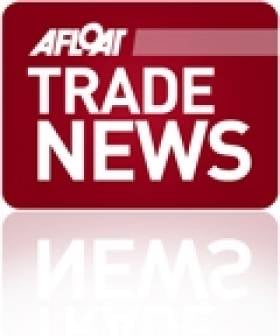Displaying items by tag: Middle East
New Role in Isle of Man Ship Registry (IOMSR) Sees Appointment of Middle East Representative
To expand operations, The Isle of Man Ship Registry (IOMSR) is looking forward to further growing its presence in the Middle East with the appointment of a representative for the region.
Captain Rakesh Yadav, who has more than three decades experience in the shipping industry and a wealth of knowledge of the region, has taken on the new key role.
His impressive CV includes senior management roles at Saudi Arabian shipping giant Bahri and a spell as chief executive of Dubai’s Emarat Maritime.
He started his career with Great Eastern Shipping in India and has also worked for Northern Marine Management and Stena. During his career, the range of roles saw him running a shipping start-up to the management of large, diverse fleets.
In addition to founding his own consultancy business, SeaLogic Shipping, earlier this year and has built a strong presence in Dubai, a leading and fast-growing commercial shipping hub.
In his new development role with IOMSR he will look to raise the registry’s profile and start conversations with ship owners and operators across the region.
Toby Brooks, deputy director of IOMSR, said: “We are delighted to have appointed someone of the calibre of Captain Rakesh to this new role, which will play an important role for our organisation as we continue on our growth journey.
“He is an accomplished marine professional and has a wealth of experience and key contacts in the region, built up over many years. That knowledge will be vital as we look to further develop our presence in this part of the world.”
Cpt Rakesh Yadav said: “I’m really looking forward to this exciting new role and proud to be associated with IOMSR.
“IOMSR has rightly built up a great reputation and is well respected for its ethos of doing the right thing and taking the lead in areas such as net zero, the environment and the welfare of seafarers.
“It’s a great message and one that I’ll be looking to share as we start conversations and look to further develop the flag’s presence in the region.”
He added: “As a Category One member of the Red Ensign group, IOMSR is also known for the speed of its technical support and its efficiency. It continues to develop and lead.”
In an industry leading development, in April 2022 IOMSR became the first flag state in the world to reduce registration fees for ships deploying green technology.
The measure gives ship owners a 15 per cent reduction on their annual registration fee. The reduced fee is available to operators of cargo ships, commercial yachts or passenger ships which are investing in biofuel, alternative fuels, wind, or shore-side energy technology.
IOMSR became the first flag state to join the ‘Getting to Zero Coalition’ in 2020. It is a partnership between the Global Maritime Forum, the Friends of Ocean Action and the World Economic Forum.
It also formally launched the first ever seafarer welfare app designed by a flag state. ‘Crew Matters’ is the most advanced of its kind ever produced for seafarers. It is available to around 8,000 sailing under the Isle of Man flag.
IOMSR is one of the world’s leading flag states and is ranked 18 in the world by Clarkson’s with around 300 ships and 12.5m GT under its flag. The registry has held top spot on the Paris MoU Port State Control whitelist and is on the whitelist in the Tokyo MoU rankings.
The registry is headquartered in Douglas, Isle of Man, a self-governing British Crown dependency and is a Category One member of the Red Ensign group.
All Eyes on Dubai for Pre-Owned Boat Show
#TRADE NEWS - Growing demand in the Middle East for pre-owned boats is creating a new market for yacht owners looking to sell, as UAE's The National reports.
This weekend's second-hand boat trade show at Dubai Creek Marina is expecting more than 7,000 visitors to peruse the more than 85 vessels on display, comprising the widest selection of boats for sale.
For this year the retail area has been expanded by 20% to make room for new retailers and exhibitors, including a new zone for personal water craft such as Jet Skis.
"There is a lot more demand [in the Middle East] for second-hand boats than new boats. The market has been growing, we have a lot of people from Qatar, Saudi Arabia, Bahrain who come to Dubai to buy a boat," said marina operations manager Abdulla Ali Al Noon.
It's a market that's being increasingly sought by Irish dealers, too, following MGM Boats' visit to the UAE for the Dubai International Boat Show this past St Patrick's weekend.
One of the companies participating in the pre-owned show this year is Al Marakeb Boat Manufacturing, whose Nour Al Sayyed says: "The crowd at the show are people who already know they're buying a boat, it's just a matter of picking one."
The National has more on the story HERE.
























































